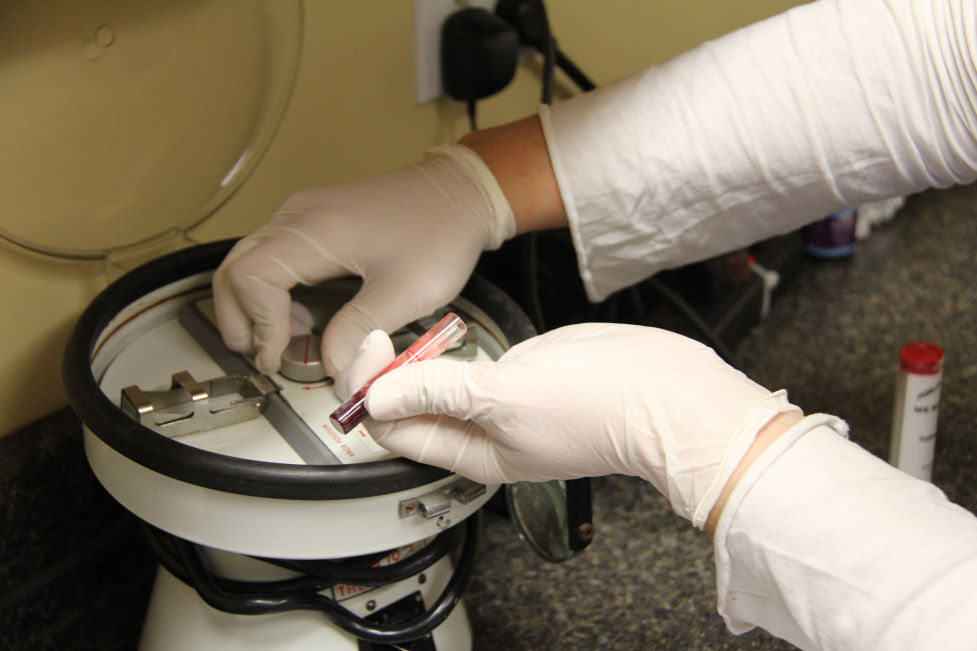HEALTH TOPICS
For Your Information
AAEP Horse Care Topics
Camelid & Small Ruminant Care
Newsletter (PDF)
Equine Vaccines (PDF)
EQUINE CUSHING’S DISEASE
Equine Cushing’s disease, or Equine Pituitary Adenoma, is caused by an over-production of hormone in part of the pituitary gland. The pituitary gland is responsible for the production and regulation of many different hormones. The loss of regulation of some of these cells is associated with production of an excess of some hormones, creating an imbalance in the horse’s body. The overgrowth of the cells is believed to be caused by a decrease in production of another hormone called dopamine. Normally, the dopamine producing cells are in a feedback mechanism and inhibit the cells producing ACTH (adrenocorticotropic hormone). ACTH tells the adrenal glands how much cortisol to release into the bloodstream of the animal. As horses age, it is believed that there is a loss of the inhibitory neurons that make dopamine. The result is that the cells normally inhibited by dopamine (the ones making ACTH) begin to produce too much ACTH.
All breeds and types may be affected, but ponies appear to be at higer risk. Cushing’s is usually seen in horses and ponies over the age of 15 years, and cases are often in their 20s or 30s. Mares and geldings are equally affected. Some animals as young as 9 years old have been diagnosed, however.
The signs of Cushing’s are often vague and variable, and may easily be confused with other diseases or simply put down to “old age”. Weight loss and lethargy are commonly observed, despite a normal or occasionally increased appetite. Loss of muscle mass, particularly over the saddle area, rump, and belly, is caused by protein breakdown due to excess cortisol produced in association with excess ACTH.
Abnormal shedding, delayed shedding, early winter coat, retained guard hairs or complete failure to shed are some of the variations in shedding that can be seen with Cushing’s horses.
Some horses and ponies may develop the appearance of a “pot belly” due to weakening and stretching of the abdominal muscles. Fat may be deposited along the crest of the neck, above the tail, behind the eyes, and behind the shoulder. Sweating is a common sign, particularly in areas where the coat is long. Affected horses may drink and urinate more than usual, although this can be very hard to assess, especially in field-kept animals.
Affected horses may appear more docile or tolerant of pain than others. Recurrent infections (especially dental and respiratory) are common due to suppression of the immune system, secondary to excess cortisol. Wound healing may be delayed and simple things such as mouth ulcers can become a major problem. Sometimes, there are other potential clues, like the wavy haircoat that looks as if it has been permed. Repeated and unexplained laminitis or founder may be related to Cushing’s Disease.
Sometimes the link is not recognised, but laminitis is probably the most serious complication of Cushing’s and may be difficult to treat. In fact, more than 50% of horses with Cushing’s are estimated to suffer from laminitis and associated foot abscesses. If your horse or pony keeps suffering from recurring foot abscesses, it might be worth checking to see if there is an underlying cause.
One of the common complaints with Cushing’s horses is difficulty maintaining weight despite adequate caloric intake. The opposite problem of inability to lose weight, despite a restricted diet, can also occur. One of the most common misconceptions about Cushing’s Disease is that a horse doesn’t have Cushing’s if it is shedding out normally. In fact, most horses do not exhibit all of the classic signs associated with Cushing’s disease. Sometimes the signs are very subtle.
After identifying the visual symptoms, clinical testing can confirm the diagnosis. There are several ways to diagnose Cushing’s, all of which are based on routine blood testing. Confirming Cushing’s can be challenging and no test is 100% accurate. A diagnosis can often be made based on the history and the delayed shedding of a long, uneven coat, as well as other clinical signs. In less clear-cut cases, it may be difficult to reach a diagnosis and your vet will be able to advise you on the most suitable test.
Once a horse has been diagnosed with Cushing’s disease, there are treatments available that may improve the horse’s condition, and in some cases, even return it to normal health. The most commonly used drug to manage Cushing’s today is a drug called pergolide. Pergolide mimics the effects of dopamine in the brain, causing a reduction in the pituitary’s secretion of ACTH.
The disease cannot be cured and often develops slowly over a period of several years. Treatment may extend or improve the horse’s quality of life, but once medication is started, it must be maintained. Many affected horses and ponies are able to live comfortably with good management.
Management tips
• The most important aspect in the treatment of Cushing’s is excellent general health care, combined with a variety of management changes to reduce the impact of clinical signs.
• Horses with thick coats will sweat and become uncomfortable and distressed in warm weather and will benefit from regular clipping, particularly in the summer.
• Dental care is very important to help prevent infections and maximize the absorption of nutrients from the diet. Dental problems leading to painful chewing will reduce appetite and further exacerbate weight loss.
• Careful assessment of diet is necessary, and giving a pelleted feed designed for older or veteran horses may be helpful. But at the same time it is important to minimize the risk of laminitis: good professional advice may be needed to provide a well balanced diet.
• Regular use of a weigh tape is useful to monitor weight, and the diet should be altered accordingly.
• Routine foot care is important to help reduce mechanical problems that can exacerbate laminitis or foot abscessation.
• Due to suppression of the immune system, prompt treatment of infection is recommended.
• Vaccinations, regular worming and treatment for ectoparasites (lice, etc) are more important than ever and should be kept up to date.
An improvement in the coat and a reduction in drinking and urination (if there was a urination problem present prior to treatment) are usually seen within three to four weeks of starting medication. Treatment does not completely halt the progression of the disease but it can lessen the clinical signs and improve the animal’s quality of life.
Because most horses with Cushing’s disease are already at an advanced age, three to five years can be a significant amount of time to prolong their lives and continue to enjoy their companionship.
If you suspect that your horse may have Cushing’s disease, you should schedule an appointment with your veterinarian and explain your concerns.
LAMA Copyright 2005







